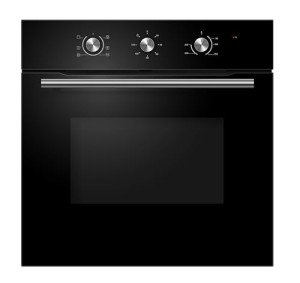A Step-By-Step Guide To Integrated Oven From Start To Finish
The Integrated Oven: A Comprehensive Guide
In contemporary cooking areas, the pattern toward integrating appliances with cabinetry to produce a smooth appearance has actually gained significant traction. Among these necessary kitchen tools, the integrated oven sticks out as a favored choice for numerous property owners and cooking enthusiasts. view it explores the benefits, features, and considerations related to integrated ovens, as well as answering frequently asked questions.
What is an Integrated Oven?
An integrated oven is a kind of built-in oven that is developed to be flush with kitchen cabinets. Unlike freestanding designs, which typically stand out by themselves, integrated ovens are hidden or partially hid, providing a streamlined and cohesive aesthetic to the kitchen space. These ovens can be found in different designs, consisting of single, double, and steam ovens, and can be integrated with racks and cabinets for boosted storage.
Advantages of Integrated Ovens
Incorporating an oven into your kitchen style can use various benefits. Here are some advantages of selecting an integrated oven:
Space-saving Design:
- Perfect for smaller kitchens, integrated ovens optimize area utilization, leaving more space for other appliances or storage.
Visual Appeal:
- The flush setup produces a streamlined, modern look that can raise the total atmosphere of a kitchen.
Customizability:
- Integrated ovens can typically be personalized to match kitchen cabinetry or to consist of unique features such as pull-out racks.
Enhanced Functionality:
- Many integrated ovens come equipped with sophisticated cooking innovation, such as smart programs and convection heating, improving cooking outcomes.
Increased Property Value:
- An integrated oven can boost the value of a home, interesting prospective purchasers who are interested in modern-day, well-appointed cooking areas.
Picking the Right Integrated Oven
When choosing an integrated oven, numerous aspects ought to be thought about to guarantee that the model fits your cooking requirements and kitchen design. Below are some crucial considerations:
Size and Capacity:
- Check the measurements of your kitchen area. Standard sizes generally range from 60cm to 90cm in width, with capacities varying based on how numerous meals you usually prepare.
Type of Oven:
- Decide in between traditional, convection, and steam ovens. Convection ovens are popular for their even heat distribution, while steam ovens keep wetness for better-flavored meals.
Features:
- Look for functions that suit your cooking design. Some performances to think about consist of:
- Self-cleaning choices
- Smart technology combination
- Numerous cooking modes
- Safety features
Energy Efficiency:
- Opt for energy-efficient models that take in less electricity while offering high efficiency.
Spending plan:
- Integrated ovens can be found in numerous rate varieties. Determine your budget plan while thinking about the longevity and sturdiness of the appliance.
Feature
Suggested Model
Explanation
Self-Cleaning Function
Yes
Saves time and effort preserving tidiness
Convection Cooking
Yes
Enhances heat circulation for even cooking
Smart Technology
Optional
Enables control from mobile devices or voice assistant
Multiple Cooking Modes
Yes
Adaptability in cooking different dishes
Energy Rating
A/A+
Ensures lower energy intake
Setup and Maintenance of Integrated Ovens
Proper setup and upkeep are vital for optimum oven efficiency. Here are some steps to consider:
Installation Steps
- Preparation: Ensure you have all the needed tools and products before beginning the setup.
- Procedure the Custom Space: Confirm the fit of the oven against the cabinets.
- Connect to Power Supply: Consult an electrical contractor for safe electrical connections.
- Leveling: Ensure the oven is level to prevent cooking disparities.
- Connect Cabinet Panels: If required, attach ornamental panels for a customized appearance.
Upkeep Tips
- Routine Cleaning: Frequent cleaning prevents food accumulation and makes sure the oven runs efficiently.
- Look for Damage: Inspect the door seals and interior for indications of damage regularly.
- Service Regularly: Schedule professional servicing to keep effectiveness and efficiency levels.
- Follow Operating Instructions: Always comply with maker guidelines for operation and maintenance.
Frequently Asked Questions (FAQs)
What is the distinction between a built-in oven and an integrated oven?
While both types are created to fit into kitchen cabinetry, built-in ovens can stand out somewhat, while integrated ovens sit flush with surrounding cabinetry.
Are integrated ovens more costly than standard ovens?
Generally, integrated ovens can be more pricey due to the design and features that accommodate a seamless build into the kitchen.
Can I replace my existing oven with an integrated oven?
Yes, but make sure to consider the size and any modifications required for your kitchen cabinetry and kitchen design.
The length of time do integrated ovens typically last?
With correct maintenance, integrated ovens can last anywhere from 10 to 15 years or longer.
Do integrated ovens need unique installation?
Integrated ovens often need expert setup to ensure they are fitted properly with suitable connections and security procedures.
Integrated ovens offer an advanced and efficient solution for contemporary kitchen areas, enhancing aesthetic appeal while offering sophisticated cooking capabilities. By thoroughly examining functions, installation, and upkeep, house owners can choose an integrated oven that best matches their culinary needs and design preferences. With the numerous styles and types readily available, anyone can accomplish a functional area that matches their cooking lifestyle, making the integrated oven an exceptional financial investment for any home.
